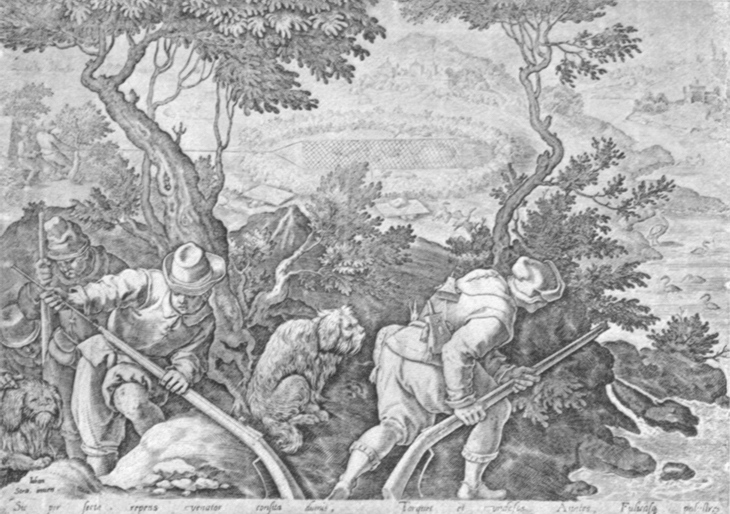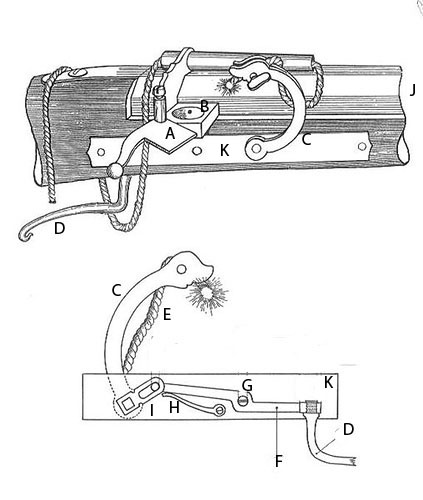There are plenty of period European prints of non-military matchlocks in hunting and target shooting scenes. The earliest I know of dates from 1504 titled "Target Shoot Zurich", Sept, 1504. Most of the match locks depicted are of the curved butt type, fired off the center of the chest, called petronels. The only known period image of a new world colonial civilian with his matchlock is by the artist, Lemoyne. He was an artist serving with the French colonist in Florida circa 1564. Lemoyne made several other images of military members of the ill-fated colony with their matchlocks. The image of the civilian shows him with a petronel, match cord alight. Also, clearly visible are his powder flask and a separate priming flask. I must also take note, over the past centurys many authors and illustrators have mistakenly shown the matchlocks rear sight as a match guide/holder. This is, in fact, the rear sight - they were called orthoptic sights in the time of their use. The orthoptic sight combined with a globe front sight, at that time called a guide, gives an excellent sight picture. Many surviving sporting matchlocks have this sight combination. I should note most all matchlocks used by those colonizing the East/North coast of the Americas were using surplus military matchlocks. A good example of this can be read in the arms requisition by James Town after the 1622, March 22nd massacre at Martin's Hundred. Asking for replacement arms and more to keep on hand, their order was filled from surplus, from the Tower of London. At that time only military armor and weapons were kept there. Gentlemen Adventures, leaders of a colonial enterprise may have brought their personnel sporting pieces with them. These would have been smaller cal., .60-.75 (approximately) and they would have been proportionately smaller and lighter too and artfully embellished. G.S.








